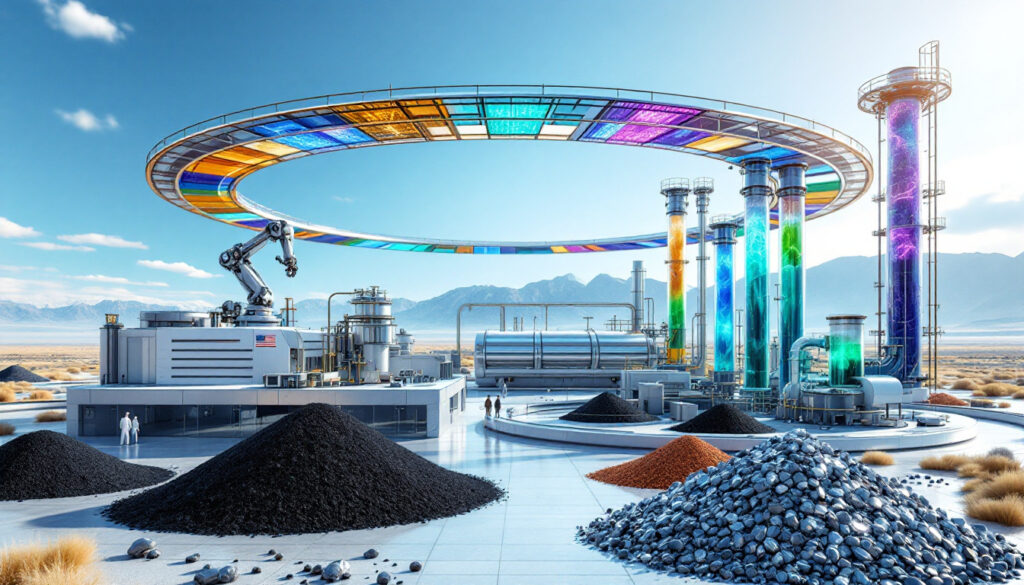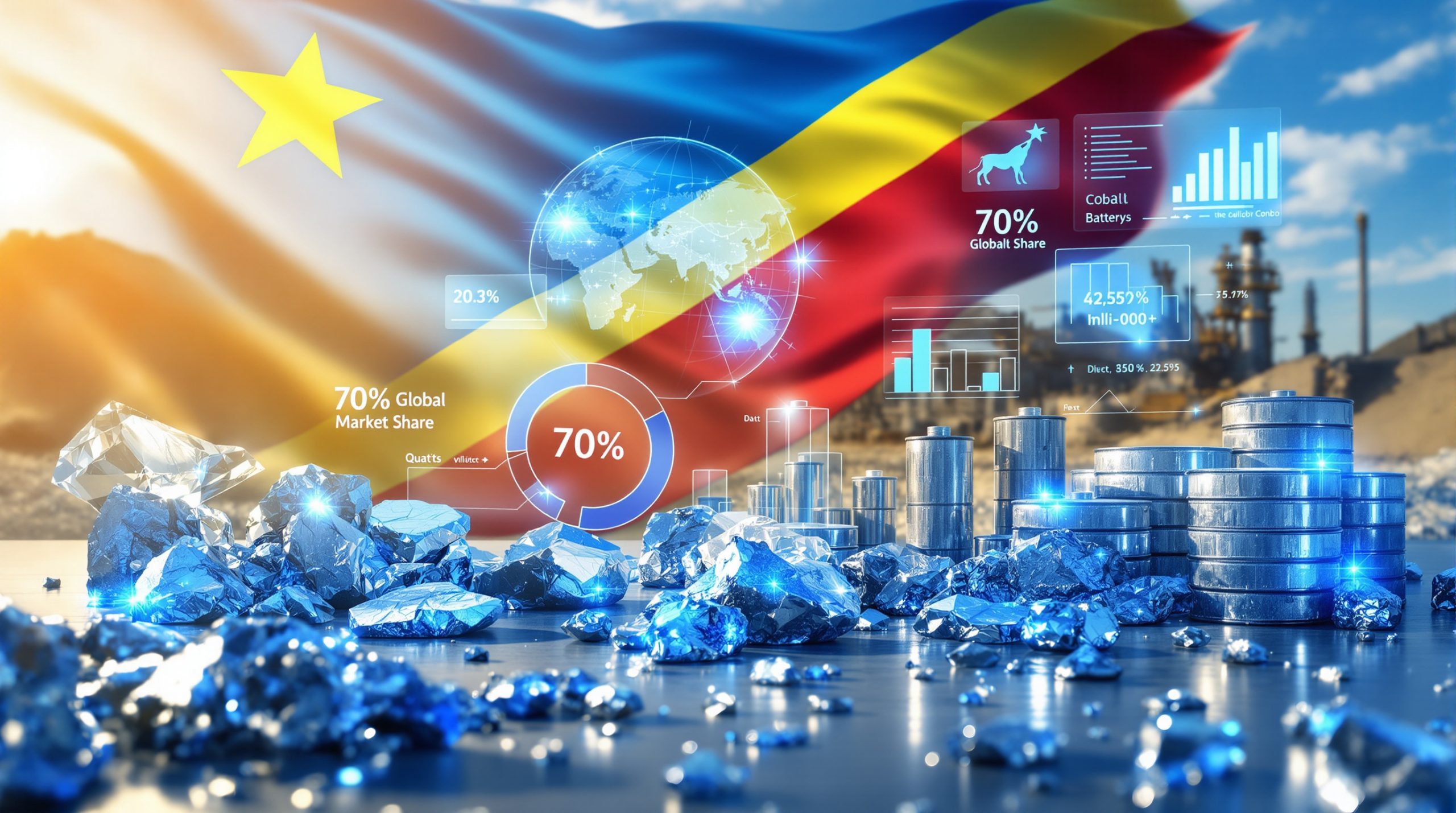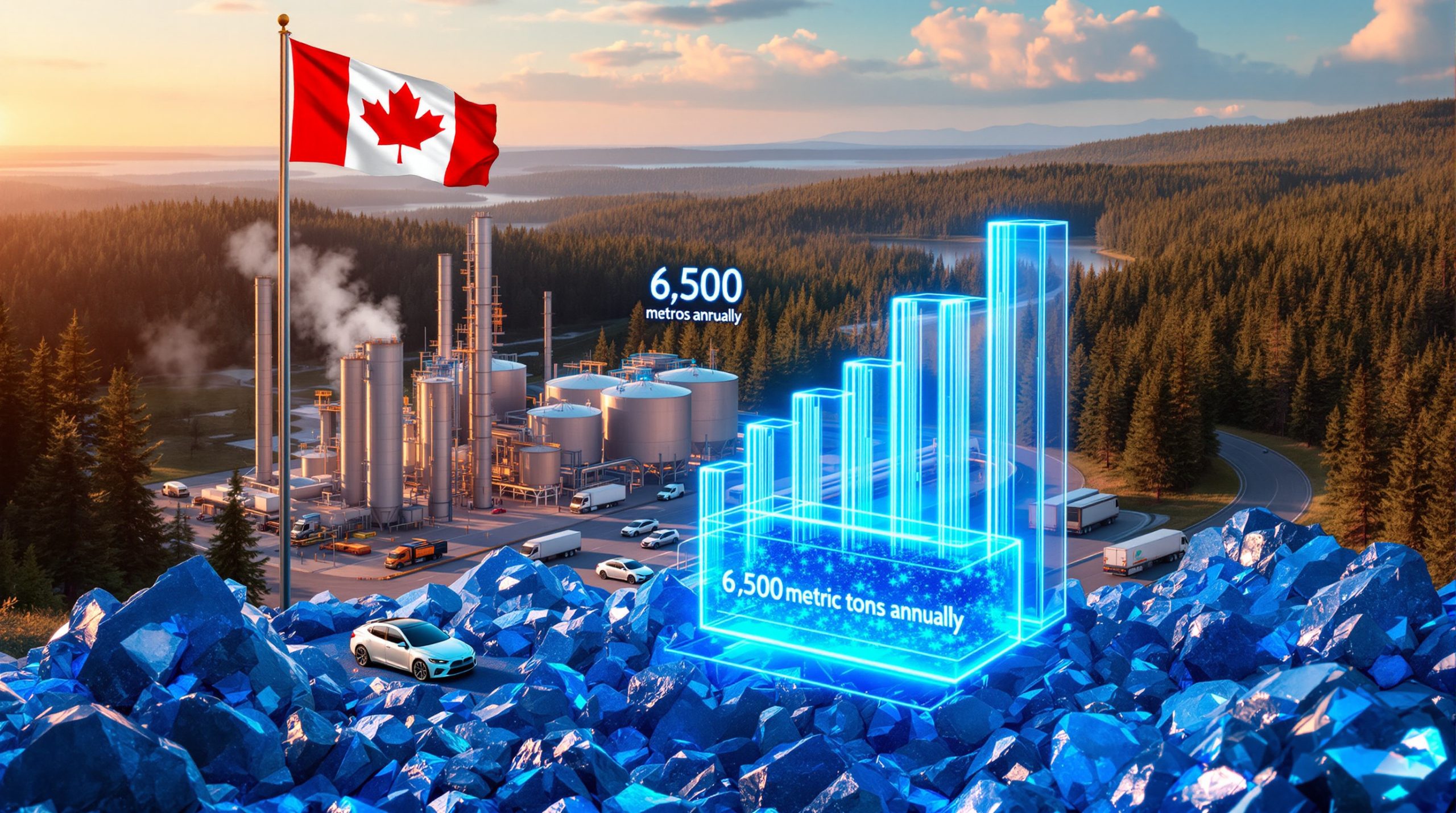American Battery Technology Company's Revolutionary Lithium-Ion Battery Recycling Facility
ABTC has achieved a remarkable milestone in the evolving landscape of sustainable energy solutions, more than doubling its production of recycled battery materials in Q1 2025 compared to the previous quarter. This achievement marks the successful transition from the commissioning phase to full-scale 24/7 operations at its cutting-edge lithium-ion battery recycling facility.
The facility implements first-of-kind integrated technologies designed specifically for lithium-ion battery recycling. What sets ABTC's approach apart is its feedstock-agnostic system, capable of processing batteries of various sizes, shapes, and chemistries—addressing one of the industry's most significant challenges.
"This milestone demonstrates the capabilities of our recycling technologies, as well as the resilience and innovation of our team," notes Ryan Melsert, American Battery Technology Company CEO. "Through hundreds of targeted operational improvements, we've been able to enhance both production quality and output while establishing ourselves as leaders in this critical industry."
ABTC's strategic vision comes at a crucial time as the global push toward electrification accelerates, creating an urgent need for sustainable battery material solutions.
How Does ABTC's Two-Phase Recycling Process Work?
ABTC's innovative approach to battery recycling involves a comprehensive two-phase process that maximizes material recovery while minimizing environmental impact.
Phase One Processing
The first phase employs a strategic de-manufacturing process that begins with mechanical separation. Unlike conventional pyrometallurgical methods that involve high-temperature smelting, ABTC utilizes a more efficient mechanical-hydrometallurgical hybrid approach.
This initial phase produces several immediately marketable recycled materials, including copper, aluminum, and steel components. Additionally, it generates lithium intermediate and black mass—a valuable powder containing nickel, manganese, cobalt, and lithium compounds.
Currently, ABTC has focused on scaling this first phase to commercial production levels, with output quality consistently meeting or exceeding industry specifications. The company has implemented proprietary sorting technologies that achieve separation efficiencies of over 95% for most materials, significantly higher than industry averages.
Phase Two Processing
The second phase, currently being implemented, involves a sophisticated chemical extraction train. This advanced hydrometallurgical process will refine the black mass and lithium intermediate materials into battery-grade components ready for reintroduction into the battery manufacturing supply chain.
When fully operational, Phase Two will produce nickel sulfate, cobalt sulfate, manganese sulfate, and lithium hydroxide at purities exceeding 99.5%—meeting the stringent specifications required by battery manufacturers. This precision is critical, as even minor impurities can significantly impact battery performance and longevity.
ABTC's proprietary extraction methods reduce chemical consumption by approximately 30% compared to conventional processes, creating both environmental and economic advantages.
What Makes ABTC's Black Mass Production Significant?
ABTC has achieved a competitive advantage through its production of high-quality black mass with industry-defined low-impurity levels. Typical black mass contains 5-10% impurities; ABTC has reportedly achieved levels below 3%, though exact specifications remain proprietary.
This quality differential commands favorable selling prices in the market, with premium black mass typically selling for 15-20% higher than standard grades. The company has established recurring shipments from strategic automotive OEMs, creating steady revenue streams while Phase Two implementation continues.
The significance extends beyond immediate sales, as the high-quality black mass provides ABTC with a competitive advantage for internal chemical extraction. The cleaner the input material, the more efficient and cost-effective the subsequent refining processes become—creating a virtuous cycle of operational efficiency.
Industry experts note that ABTC's ability to process diverse battery chemistries, including newer lithium iron phosphate (LFP) formulations gaining popularity in the EV market, positions them favorably as battery technologies continue to evolve.
The Growing Market for Lithium-Ion Battery Recycling
Why Is Battery Recycling Becoming Critical?
The urgency for efficient battery recycling solutions has never been greater. Global electric vehicle sales increased by 50% year-over-year as of February 2025, reaching 1.2 million units according to data from Rho Motion. This accelerating adoption is creating an unprecedented wave of future battery waste.
Deloitte analysis indicates that the "retirement wave" of early EV batteries is growing at 43% annually, with the first major wave expected to hit between 2025-2030 as batteries from the initial mass-market EVs reach end-of-life status.
Beyond waste management, battery recycling addresses critical supply chain vulnerabilities. The United States currently imports more than 80% of its lithium, 75% of its cobalt, and 50% of its nickel—all essential battery materials. Domestic recycling capacity directly reduces this foreign dependency.
The Department of Energy has identified battery recycling as a national priority, with its ReCell Center dedicating significant resources to advancing recycling technologies. ABTC's innovations align directly with these national strategic objectives.
Economic and Sustainability Benefits
The economic case for battery recycling continues to strengthen. Recent analysis from Benchmark Mineral Intelligence indicates that recycled battery materials can be produced at 70-85% of the cost of newly mined materials, while reducing energy consumption by 50-70%.
From a sustainability perspective, lifecycle assessments demonstrate that recycling lithium-ion batteries can reduce greenhouse gas emissions by 30-50% compared to primary production. Water consumption is typically reduced by 60%, and land disturbance by nearly 100% when compared to mining operations.
ABTC's process creates a more circular battery economy, where materials cycle repeatedly through the value chain rather than following a linear extract-use-dispose pathway. This circularity is increasingly demanded by both consumers and regulators.
Exploring Europe's Battery Recycling Revolution has shown how regulatory frameworks can drive innovation in this space. The European Union's Battery Regulation, implemented in 2023, requires 70% recycling efficiency for lithium-ion batteries by 2030, with material-specific recovery targets of 95% for cobalt, nickel, and copper. Similar regulations are under consideration in North America, creating regulatory tailwinds for advanced recycling operations.
Business Impact and Future Outlook
ABTC's Strategic Positioning
ABTC has established itself as a leader in producing high-quality black mass, a critical intermediate in the battery recycling value chain. The company's vertical integration strategy—controlling both mechanical processing and chemical extraction—creates significant competitive advantages in cost structure and quality control.
The planned integration of chemical extraction technologies represents a significant value multiplier. While black mass typically sells for $2,000-4,000 per ton depending on metal content and purity, refined battery-grade materials command substantially higher prices: nickel sulfate ($15,000-20,000/ton), cobalt sulfate ($30,000-45,000/ton), and lithium hydroxide ($15,000-25,000/ton).
Rio Tinto's Major Step in Battery Metals demonstrates how established mining companies are also recognizing the strategic importance of battery materials. ABTC's targeted operational improvements continue driving production quality improvements, with the company reporting a 15% increase in metal recovery rates since initial commissioning. These efficiency gains directly impact profitability while reducing environmental footprint.
As global demand for battery recycling services surges, ABTC appears well-positioned to capture market share. Industry projections suggest the global lithium-ion battery recycling market will grow from approximately $6.5 billion in 2025 to over $18 billion by 2030.
Expert Insights on ABTC's Progress
The company's advances have attracted attention from industry experts and analysts. "What makes ABTC's approach particularly noteworthy is their ability to process multiple battery chemistries through a unified system," explains Dr. Jennifer Dunn, Battery Recycling Researcher at Argonne National Laboratory. "This flexibility is critical as battery chemistries continue to evolve."
Financial analysts have noted ABTC's potential to capitalize on the growing gap between battery material demand and primary supply. "We're seeing a fundamental shift in how the market values recycling operations," notes Marcus Thielking, Resources Analyst at BloombergNEF. "Companies with proven technologies and operational facilities are commanding significant premiums as the market recognizes their strategic importance."
The American Battery Technology Company website provides detailed insights into their technological approach and business strategy, highlighting their commitment to sustainable battery material production.
What's Next for ABTC's Recycling Facility?
ABTC has outlined an ambitious roadmap for continued facility development. The immediate focus remains on enhancing production quality through process optimization and quality control improvements. The company reports targeting a 25% increase in throughput capacity by year-end through debottlenecking efforts and strategic equipment upgrades.
Further scaling of operations is anticipated as battery retirement volumes increase. The company has secured sufficient land adjacent to its current facility to potentially triple capacity as market conditions warrant.
Implementation of greater efficiencies through automation and AI-driven process control represents another focus area. Early tests suggest potential energy consumption reductions of 15-20% through optimized operating parameters.
The integration of second phase chemical extraction processes remains the most significant near-term value driver. ABTC has indicated the first modules of this system will come online in stages throughout 2025, with full integration targeted by Q1 2026.
Market analysis suggests ABTC may need to expand further to meet growing demand, particularly as regulatory requirements for battery recycling tighten globally and automotive manufacturers seek closed-loop solutions for their battery supply chains.
FAQs About Lithium-Ion Battery Recycling
What materials can be recovered from recycled lithium-ion batteries?
Modern lithium-ion battery recycling can recover numerous valuable materials. Structural components include copper from current collectors (99% recoverable), aluminum from cell casings and current collectors (98% recoverable), and steel from battery pack structures (nearly 100% recoverable).
Critical active materials include lithium compounds (80-95% recoverable depending on process), nickel (up to 98% recoverable), cobalt (95-99% recoverable), and manganese (90-95% recoverable). The exact recovery rates depend on battery chemistry and recycling technology employed.
Additional recoverable materials include graphite, electrolyte components, and in some cases, rare earth elements used in motor components when full EV powertrains are processed.
How does battery recycling contribute to sustainability?
Battery recycling delivers multiple sustainability benefits across environmental, social, and economic dimensions. Environmentally, it reduces the need for new mining operations—each ton of recycled lithium avoids approximately 15 tons of CO2 emissions compared to virgin production.
Energy consumption for producing battery materials from recycled sources is typically 60-70% lower than production from mined ores. Water usage is reduced by an estimated 50-80%, depending on the material and comparison baseline.
From a social perspective, recycling reduces dependence on mining operations that sometimes involve problematic labor practices or occur in politically unstable regions. It also creates skilled domestic jobs—estimated at 15-20 jobs per 1,000 tons of annual processing capacity.
Economically, recycling creates a more price-stable supply of critical materials, reducing vulnerability to geopolitical disruptions and market volatility. The 2025 Lithium Market Challenges and Opportunities highlight how recycling can provide a buffer against market volatility.
What challenges exist in scaling battery recycling operations?
Despite promising advances, battery recycling faces several scaling challenges. The variety of battery chemistries and designs complicates processing—each chemistry requires specific handling, and design standardization remains limited. ABTC's feedstock-agnostic approach addresses this, but still requires ongoing R&D to optimize for emerging chemistries.
Collection and transportation logistics present another hurdle. Batteries are classified as hazardous materials, requiring specialized handling and transportation. Creating efficient reverse logistics networks remains costly, with transportation often representing 15-25% of total recycling costs.
Processing efficiency and cost-effectiveness continue improving but require scale for economic viability. Current estimates suggest facilities need to process at least 10,000 tons annually to achieve competitive economics.
Meeting battery-grade material specifications represents perhaps the greatest technical challenge. Cathode materials require 99.9%+ purity levels for optimal performance, demanding sophisticated refining processes and stringent quality control.
How does domestic battery recycling impact national security?
Domestic battery recycling directly enhances national security through multiple mechanisms. It reduces dependence on foreign material sources—particularly critical for lithium, cobalt, and graphite, which appear on the U.S. Critical Minerals List and currently come predominantly from potentially unreliable foreign sources.
Recycling strengthens supply chain resilience by diversifying material sourcing and reducing vulnerability to export restrictions or political instability in mining regions. During recent supply chain disruptions, recycled materials proved less volatile in both availability and pricing.
The lithium-ion battery recycling facility technologies support domestic manufacturing capabilities by ensuring stable material inputs for U.S. battery producers, supporting broader reshoring initiatives in the energy storage and electric vehicle sectors.
Recycling aligns with critical minerals security initiatives including the 2022 Defense Production Act determinations that authorized financial support for projects developing sustainable domestic supply of battery materials.
As geopolitical competition for battery materials intensifies, countries with established recycling infrastructure gain strategic advantages in resource security and economic competitiveness. Mining's Crucial Role in the Clean Energy Transition underscores the importance of both primary and secondary material sources, with Decarbonisation in Mining: Australia's Clean Energy Revolution showing how even traditional mining is adapting to sustainability imperatives.
Looking for the Next Battery Technology Breakthrough?
Stay ahead of the market with Discovery Alert's proprietary Discovery IQ model, which instantly notifies investors about significant ASX mineral discoveries in the battery metals sector and beyond. Explore our dedicated discoveries page to understand how early identification of breakthrough technologies can lead to exceptional investment returns.




